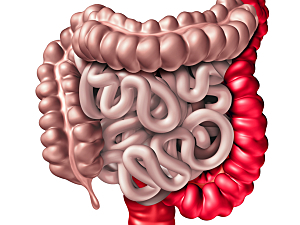To date, only one head-to-head randomized, controlled trial has compared biologics for treating ulcerative colitis (UC). Published in NEJM, it demonstrated superiority of vedolizumab to adalimumab with respect to clinical remission. On the basis of that trial, American Gastroenterological Association guidelines recommend vedolizumab or infliximab rather than adalimumab as the first-line biologic agent for UC.
Joining a growing body of evidence, a new “real-world” retrospective study shows biologic-naïve adults with UC stay on vedolizumab longer than either of the two tumor necrosis factor-α (TNFα) inhibitors. Rahul S. Dalal, MD, MHP, a research fellow in the Department of Gastroenterology, Hepatology and Endoscopy at Brigham and Women’s Hospital, Jessica R. Allegretti, MD, MPH, associate director of the Crohn’s and Colitis Center, and colleagues published the findings in Digestive Diseases and Sciences.
Methods
The team analyzed data on 805 patients with UC who initiated infliximab (n=332), adalimumab (n=278), or vedolizumab (n=195) between June 1, 2014, and December 31, 2020. Patients were followed until they discontinued their drug or August 1, 2021.
Kaplan–Meier Analyses
Kaplan–Meier “drug survival” analyses showed (all P<0.01):
- Overall, the time from biologic initiation to discontinuation was greatest for vedolizumab
- The time to discontinuation due to primary or secondary nonresponse (primary outcome) was greater for vedolizumab and infliximab than for adalimumab
- The time to discontinuation due to an adverse effect (secondary outcome) was greatest for vedolizumab
Detail of Adverse Effects
The adverse effects most commonly associated with drug discontinuation were:
- Joint/soft tissue (21%)—vedolizumab 4%, adalimumab 6% and infliximab 12%
- Acute reaction (19%)—0, 1% and 18%
- Subacute rash (19%)—1%, 8% and 10%
- Infection (14%)—0%, 8% and 6%
IPTW Analyses
The three cohorts differed significantly in demographics, body mass index, concomitant medication use, malignancy history, and other covariates. To adjust for that and for possible treatment selection bias, the researchers used propensity scores and a statistical technique called inverse probability of treatment weighting (IPTW) when making pairwise comparisons of drugs.
In the IPTW analyses, the hazard of discontinuation for nonresponse was:
- Significantly lower for vedolizumab vs. adalimumab (HR, 0.51; 95% CI, 0.34–0.75)
- Similar for vedolizumab and infliximab
- Significantly greater for adalimumab vs. infliximab (HR, 2.08; 95% CI, 1.51–2.86)
The hazard of discontinuation for adverse effects was:
- Significantly lower for vedolizumab vs. adalimumab (HR, 0.25; 95% CI, 0.09–0.64)
- Significantly lower for vedolizumab vs. infliximab (HR, 0.21; 95% CI, 0.10–0.46)
- Similar for adalimumab and infliximab
Other Outcomes
Other important results of IPTW analyses were:
- Vedolizumab vs. adalimumab—Significantly greater odds of corticosteroid-free clinical remission (CFCR) at 24 months and deep remission (DR) at 48 months
- Adalimumab vs. infliximab—Significantly lower odds of CFCR at 24 and 48 months and DR at 24 and 48 months
No comparisons between vedolizumab and infliximab were statistically significant.
These long-term data support the choice of vedolizumab over adalimumab as a first-line biologic agent for patients with UC. They also highlight different durability and efficacy of TNFα inhibitors for induction of remission.
